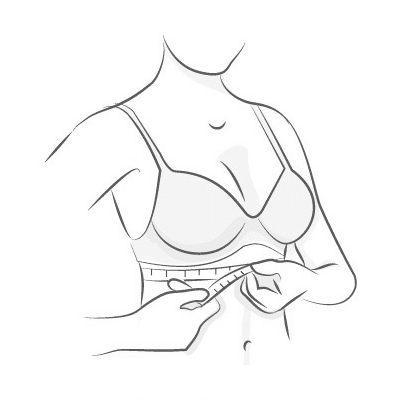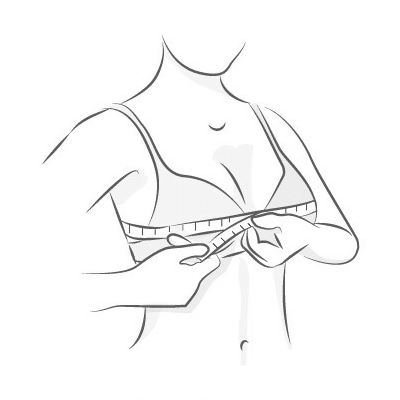Bra Sizes Explained
Bra size has two measurements; the band (rib cage) and the cup (bust). Cup size does not represent breast size but instead represents the difference between the rib cage and the bust.
How To Measure Bra Size

BAND SIZE
Band size is measured numerically e.g. 30, 32, and 34…etc. and refers to the size of the rib cage.

CUP SIZE
Cup size is measured alphabetically e.g. A, B, C, D, DD, E, F… etc. and refers to the size of the breasts in relation to the rib cage i.e. how much bigger the breasts are than the rib cage.
Bra Sister Sizes
Bra sizes that are the same in volume are often referred to as “sister sizes”. The grey cells in the table below demonstrate how the sizes diagonally adjacent from the top right to the bottom left are the same in breast volume i.e. the same volume of breast tissue spread across different size rib cages (band sizes).
Sister sizes demonstrate that cup size doesn’t indicate breast size but instead the difference between the breasts and rib cage. If someone's rib cage gets larger but their breasts stay the same, they’ll need a larger band and a smaller cup, demonstrating that the difference between their breasts and rib cage has decreased. For example, if someone usually wears a 26H bra and gains weight around just their middle and not their breasts they may need a 28GG instead; the same volume as a 26H but on a larger rib cage.
Bra sizes can be confusing and so if you try on a bra that fits your breasts very well but doesn’t fit in the band then simply remember that:
If you need a smaller band go up in the cup
If you need a larger band go down in the cup

